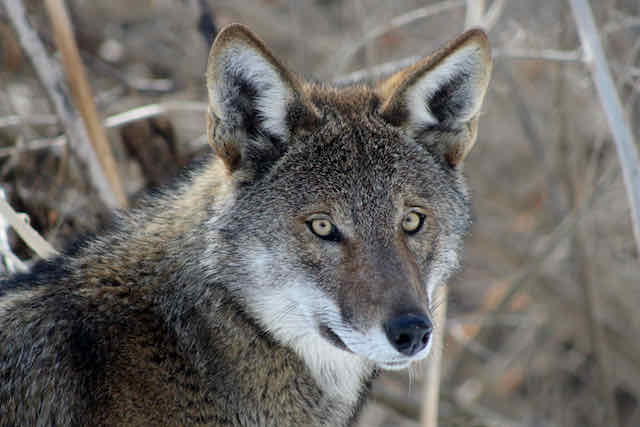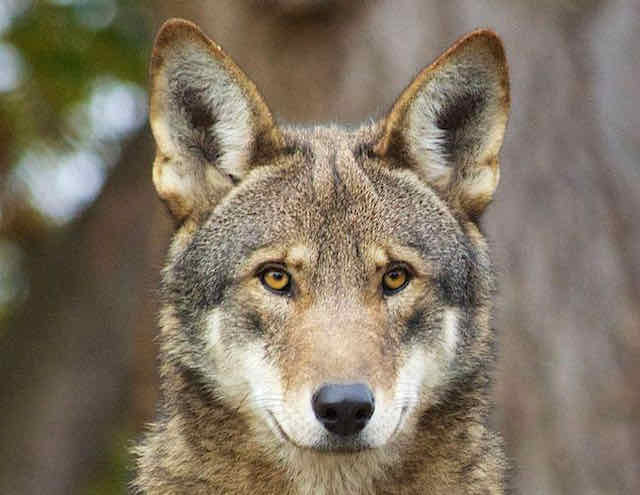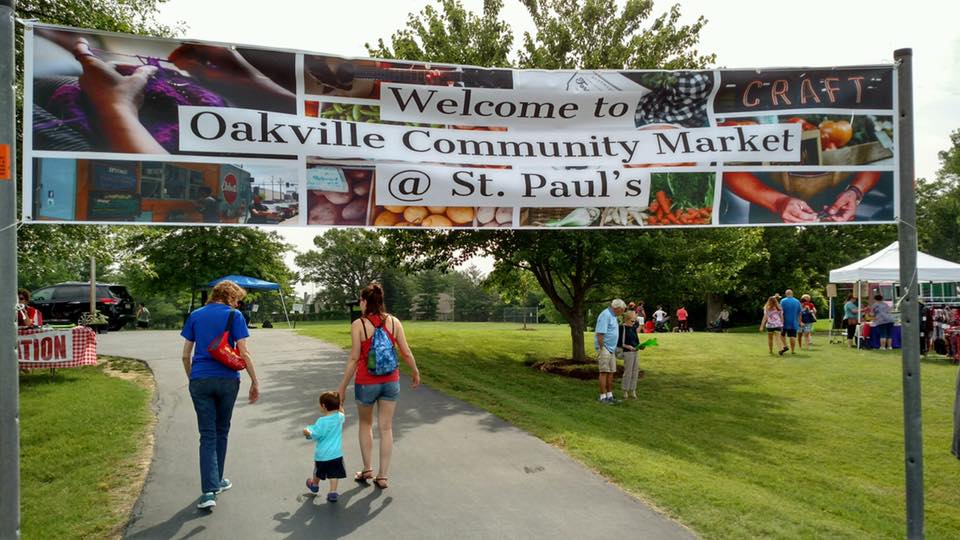The St. Louis Zoo is transforming part of its land in Franklin County, Missouri, into a conservation habitat in hopes of saving the American red wolf from extinction, as the species has only 20 wolves left in the wild. The zoo announced Monday that it plans to develop a private, protected natural setting in Franklin County for 24 American red wolves to live and breed.
In response to what the zoo called an urgent call to keep the species native to North America rom going extinct, in 2021 the zoo will be developing approximately 20 acres of its donated 355-acre property in Franklin County known as the St. Louis Zoo Sears Lehmann Jr. Wildlife Reserve to advance the conservation of the red wolf. The zoo will build separately secured habitats for 12 mating pairs of wolves. The wolves will come from other conservation organizations in 2022.
The campus will not be open to visitors, as the zoo wants the wolves to learn natural survival skills without much human interaction in the secured facility.
The zoo describes the few remaining wild American red wolves as secretive, elusive animals active after dusk, but many cannot avoid the daytime actions of humans that are limiting their natural range. These wolves typically have one breeding pair in each close-knit pack. The wild population has been decimated, with the majority of American red wolf deaths caused by humans, including illegal hunting, vehicle strikes and habitat loss.
The zoo is collaborating on this critical conservation project with the U.S. Fish and Wildlife Service, which is responsible for managing the wild American red wolf population and reintroduction efforts in the eastern U.S., as well as with the Conservation Centers for Species Survival (C2S2), a science-based global initiative taking collective action to save animals from extinction.
“American red wolves are key species,” said the zoo’s President and CEO Jeffrey Bonner in the announcement. “Once populations are restored, they should create a balanced natural environment, fulfilling their predator-related roles to maintain stability within the ecosystem.”
The St. Louis region has a rich history in wolf conservation led by the Endangered Wolf Center in Eureka, Missouri. After retiring as director of the St. Louis Zoo in 1970, Marlin Perkins and his wife, Carol, turned their attention toward wolf conservation. In 1971, they joined with a group of individuals to found the Endangered Wolf Center in an effort to address the serious plight of wolves at risk of extinction. Today, the Association of Zoos and Aquariums (AZA)-accredited Endangered Wolf Center is a global leader in preserving and protecting several endangered wild canid species, including the American red wolf, the zoo said.
For many years, the zoo has collaborated with the Endangered Wolf Center in various ways. As the zoo plans its entry into the effort to save American red wolves from extinction, the Endangered Wolf Center has generously shared its 50 years of expertise and advice related to the location and construction of the zoo’s new wolf habitats.
“We are absolutely thrilled that the Saint Louis Zoo is joining the pack to save the American red wolf,” said Endangered Wolf Center CEO Virginia Busch. “We look forward to expanding our collaboration with the Zoo in the future.”
“The quick work of the Saint Louis Zoo to answer the call to action for this North American species is crucial for its survival,” said Angelina Casillas, Programs Coordinator, C2S2. “American red wolves are critically endangered, and this long-term commitment by the Saint Louis Zoo will be key to growing the population in zoos and restoring a sustainable, healthy population to the wild.”
The St. Louis Zoo American red wolf conservation and recovery facility is supported by private donations from Kevin Beckmann and an anonymous donor and received USFWS Recovery Challenge grant funding through C2S2.
“We’re incredibly thankful for the generosity of donors who support our mission to save animals from extinction,” Bonner said in a news release. “Conservation is the backbone of the Zoo, and we’re committed to innovative, collaborative projects like this one to secure the future of wildlife.”
The zoo’s 12 habitats will provide roughly 25 percent of the spaces needed within the American Red Wolf Species Survival Plan (SSP) of the AZA to double the population in zoos to its optimal size. This SSP manages the population of American red wolves in human care and works to protect the species in the wild. In addition to the SSP program, American red wolves are one of the species in AZA’s Saving Animals From Extinction (SAFE). Through SAFE, the entire AZA-accredited zoo and aquarium community focuses its conservation science, wildlife expertise and outreach to millions of annual visitors on saving species in the wild.
“The Saint Louis Zoo has been a leader in conservation efforts for many years and for many species,” said Chris Lasher of the North Carolina Zoo, who is the American Red Wolf SSP coordinator and SAFE program leader. “Their focus on the American red wolf will provide critical support in saving this species from extinction.”
About the St. Louis Zoo Sears Lehmann Jr. Wildlife Reserve:
The St. Louis Zoo Sears Lehmann Jr. Wildlife Reserve is a 355-acre natural area located 40 miles southwest of St. Louis in Franklin County. In 1993, the property was donated to the zoo by Peggy Lehmann of St. Louis in honor of her late husband, Sears Lehmann Jr. She envisioned the property as an area for wildlife and as a future location where the zoo might someday expand its conservation and animal science programs.
Since taking over the land, the zoo has primarily preserved it as a natural site for native wildlife until its latest plan to use the site for breeding red wolves.




































